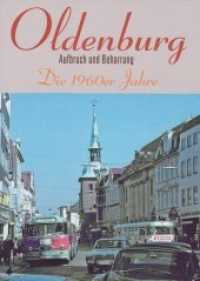- ホーム
- > 洋書
- > 英文書
- > History / World
Full Description
This book presents guidance, theory, methodologies, and case studies for analyzing tree rings to accurately date and interpret historic buildings and landscapes.
Written by two long-time practitioners in the field of dendrochronology, the research is grounded in the fieldwork data of approximately 200 structures and landscapes. By scientifically analyzing the tree rings of historic timbers, preservationists can obtain valuable information about construction dates, interpret the evolution of landscapes and buildings over time, identify species and provenance, and gain insight into the species matrix of local forests. Authors Darrin L. Rubino and Christopher Baas demonstrate, through full-color illustrated case studies and methodologies, how this information can be used to interpret the history of buildings and landscapes and assist preservation decision-making.
Over 1,000 samples obtained from more than 40 buildings, including high style houses, vernacular log houses, and timber frame barns, are reported. This book will be particularly relevant for students, instructors, and professional readers interested in historic preservation, cultural landscapes, museum studies, archaeology, and dendrochronology globally.
Contents
1. Can you date my building: an introduction to tree-ring analysis for dating buildings and landscapes; 2. Understanding cultural landscapes and historic buildings: frameworks for interpreting and communicating tree-ring analysis; 3. Botany for the dendrochronologist; 4. Tree-ring basics for the historian, archaeologist, and preservationist; 5. Tree-ring analysis methods for the field, woodshop, and lab; 6. Archival and scholarly sources for interpreting tree-ring analysis; 7. Reporting the results of tree-ring analysis; 8. Enhancing interpretation: case studies for open air and house museums; 9. Case studies: dating and interpreting diverse cultural landscapes; 10. Chronicling landscape evolution using tree-ring analysis; 11. New Harmony, Indiana: tree-ring analysis of a communal and utopian landscape; 12. Innovation to obsolescence: tree-ring analysis of a regional barn type; 13. Unique applications of tree-ring data; 14. Active inquiry: dating a 19th-century log house using historical documents and tree-ring science








